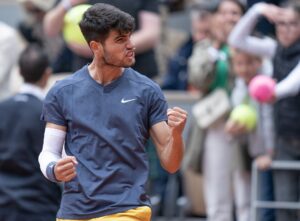Remember the 2017 Australian Open? That was the tournament which saw the post-injury comebacks of Roger Federer (his first) and Rafael Nadal (his umpteenth), and where both players contested a Grand Slam final after six years (the 2011 French Open).
That final made for nostalgia in more ways than one – the veterans’ simultaneous return to the centre stage in Slams, their defiance of their detractors (both tangible and intangible) and their renewed acceleration towards solidifying their individual longevity.
At the other end of the spectrum, the manner in which they went about rebuilding their fortresses ensured that in this, too, they had laid a template which was expected to be followed by the other top-ranked players – especially Novak Djokovic and Andy Murray – who were dealing with near-immediate injury-related concerns of their own, when it came to their comebacks.
When they rejoined the Tour, in 2018, a wealth of expectations surrounded them. This was specifically felt with respect to the Serbian, whose abrupt loss of form in 2016, after his win at the French Open that year took everyone by surprise. As the former world No. 1 went about tweaking and altering his game – even as he admitted about still struggling with a dodgy elbow – and replaced his coaches to get his old coaching team to band around him again, the route back looked steeply uphill for him.
It, then, took Djokovic the better part of the clay season to regain his confidence which became the bulwark for his still-inconsistent form. Come the grass season, right from Queen’s up to Wimbledon, Djokovic rode on this revived confidence of his to reach the final in the former tourney and take home his fourth title in the latter event.
Now, post-Wimbledon, as the players crossed continents westwards, it’s once again his self-confidence which has held the 31-year-old in good stead. In the two tournaments he has played as precursors to the US Open – the Rogers Cup and the Cincinnati Open – yet again carrying him through in matches, where he has struggled to find the full range of his rhythm.
This has been pointedly visible in Cincinnati, where bar his first-round match against Steve Johnson, Djokovic has been pushed to the deciding third set by his opponents. He has had to rally down from a set down as he has stuttered in the second set after gaining an upper hand. There has been variety in how he came through in each match, but instead of adding depth to the extent of his self-belief, this variation has cast him in shadows ahead of his final against Federer.
In what will be their 46th meeting against each other, Djokovic goes in with the slight edge leaning in his favour with a lead in their head-to-head, 23-22. However, just as quickly it emerges that while he has lost all five finals played in Cincinnati before, three of them have come against Federer.
But why should this statistic be the end of the confidence trek of Djokovic’s chances in Cincinnati? Specifically, now, when he is also chasing another sliver of history – of being the first player to win all nine Masters 1000 titles?
Accurate as they are when it comes to statistical clarification, head-to-heads are susceptible to the slightest change without any indication to the same. Moreover, if they did weigh in so much, we wouldn’t be seeing upsets in every tournament and the concept of changing of guards would have never risen.
Djokovic, too, would never have been so intently discussed. Neither would his results have been determinedly dissected. Far beyond the scope of his results, then, the one thing Djokovic has provided to tennisdom at large has been his ability to keep pushing to make his way forward to the top of the game and staying put there, instead of baulking and falling down as was sceptically expected of him.
It did take him time to do that. From adding to the numbers of his Grand Slam titles to completing the Grand Slam itself, Djokovic has attained every peak which had been set as a challenge for him.
And, just like anywhere else, his time in Cincinnati will come too. Maybe on this Sunday. Or maybe not, with Federer getting the better of him yet again. But, until he does, there’s no doubt that Djokovic won’t stop trying – in a way, writing his own template of a comeback success story, distinct to what had been expected of him, at the start of the 2018 tennis calendar.






